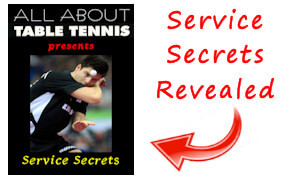You Are Here: Home » Choosing Table Tennis Equipment » Table Tennis Glue
How To Choose Your Table Tennis Glue
Top tips to help you choose your ideal table tennis racket.
Part four - what table tennis glue should you use?
By Martin Hughes
Owner and Editor
Part One | Part Two | Part Three | Part Four | Part Five
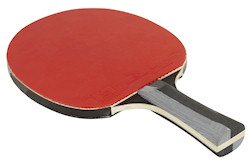
In parts one, two and three, I recommended that you buy a customised racket, rather than a ready-made racket, if you're serious about playing table tennis.
Well, if you've followed my recommendations and chosen your table tennis blade and rubbers to suit your style of play, you'll now need to know how to affix your rubbers onto your blade.
Some suppliers will offer to do this for you, but they'll probably charge you for this. It's much easier to do it yourself.
But did you know that there are only two ways that you can now affix your rubbers onto your blade?
Let's take a look...
TABLE TENNIS EXPERT
REVEALS HIS SECRETS
Click Here For Details
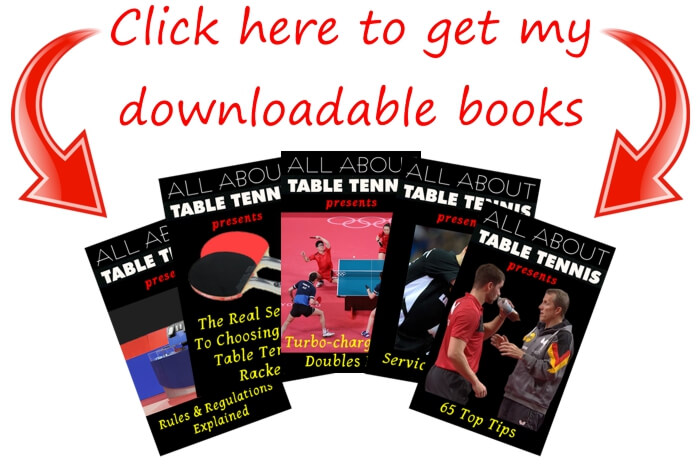
Click here for a large selection of
table tennis equipment at Megaspin *
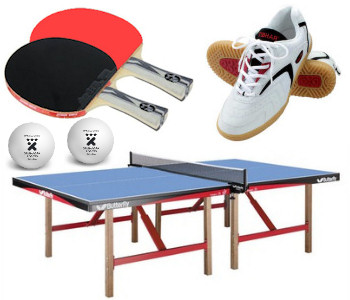
Click here for a large selection of
table tennis equipment at Bribar *
^ Top of page ^
But first, did you know that there are...
Different types of table tennis glue
Buy Your Glue Here
Butterfly, Donic, Killerspin & more
Click here to view at

Click here to view at

Click here to view at

Buy Your Glue Here
Butterfly, Donic, Killerspin & more
Click here to view at

Click here to view at

Click here to view at

Since the 1980s, table tennis players have been experimenting with different types of table tennis glue to affix their rubbers to their blade.
It was discovered that certain types of glue had the effect of increasing the speed of the table tennis rubber if the player re-glued the rubber at frequent intervals.
This gave the attacking / offensive player a distinct advantage and gradually led to the development of "speed glue".
However, this type of glue contained compounds which gave off a distinctive odour and it was subsequently considered harmful to a players' health.
So the International Table Tennis Federation (ITTF) amended the rules and effectively banned certain types of table tennis glue.
TABLE TENNIS EXPERT
REVEALS HIS SECRETS
Click Here For Details

Click here for a large selection of
table tennis equipment at Megaspin *

Click here for a large selection of
table tennis equipment at Bribar *
^ Top of page ^
And in 2007 the ITTF announced...
Major changes to the rules on table tennis glue
With effect from May 2007, glues containing harmful volatile compounds (VOCs) were no longer approved by the ITTF. This included glues with organic and inorganic volatile compounds, excluding water.
All previous ITTF approvals of table tennis glues were withdrawn and the ITTF no longer approves any type of glue.
Water-based glues which are free of harmful volatile compounds are now the only types of glue which you can use to affix your rubbers to your blade.
The ITTF also began testing rackets to check for unauthorised substances with effect from 1 September 2008, which was immediately after the conclusion of the 2008 Olympic Games.
^ Top of page ^
So how do you affix your rubbers?...
Gluing Your Rubbers
There are now only two methods that you're allowed to use to glue your rubbers onto your blade - using quick glue sheets or water-based table tennis glue.
1. Quick glue sheets
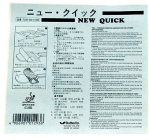
Quick glue sheets are 0.05mm thick transparent sheets which have two adhesive sides.
They work in the same way that double-sided tape works, and they enable you to quickly and easily affix your rubbers to your blade, but they don't seem to be very popular with players.
In my experience, they can be quite tricky to use, as it's very easy to get it stuck to itself and thereby make it unusable.
You can buy glue sheets from
Amazon.com
or
Megaspin.net
2. Water-based table tennis glue
The second method is to use water-based glue, of which there are two types - regular and speed.
For most players, regular glue is all you need.
You glue your rubbers onto your blade and then you only need to use the glue again when you replace your rubbers.
I recommend...

Butterfly Free Chack glue which is completely free from organic solvents.
After applying it to the blade and the rubber, then letting it dry, you can stick the rubber and the blade surfaces together.
It's also very easy to remove the rubber from the blade and to peel off the remaining glue from the sponge when you want to change your rubbers.
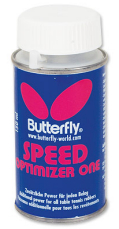
Speed glue is only suitable for an advanced player who uses an attacking / offensive style of play, but it requires frequent re-gluing to maximise its' effect.
I recommend...
Butterfly Speed Optimizer One which meets the new ITTF standards for VOC free products.
You can buy glue from
Amazon.com
or
Megaspin.net
or
Amazon.co.uk
Although some table tennis suppliers will offer to glue the rubbers onto the blade for you, they'll probably charge you for this.
I'd recommend getting an experienced player to glue them on for you, and show you how to do it properly at the same time.
You don't want to waste your money by doing it yourself and making a mistake - but don't be afraid to learn how to do it yourself - it's easy after a bit of practice!
Buy Your Glue Here
Butterfly, Donic, Killerspin & more
 |
|
Buy Your Glue Here
Butterfly, Donic, Killerspin & more
Click here to view at

Click here to view at

Click here to view at

Important reminder...
As we saw in part three table tennis rubbers must incorporate the ITTF logo to show that they are authorised rubbers.
Therefore, when you glue your rubbers onto your blade you'll need to make sure that the ITTF logo is clearly visible near the handle of your blade.
So, now that you've chosen your blade and your rubbers, and attached them onto your blade you'll need to consider how to take care of them, so let's take a look at racket care in the final part five here...
Part One | Part Two | Part Three | Part Four | Part Five
^ Top of page ^
Click here for a large selection of
table tennis equipment at Megaspin *

Click here for a large selection of
table tennis equipment at Bribar *
^ Top of page ^
You Are Here: Home » Choosing Table Tennis Equipment » Table Tennis Glue
